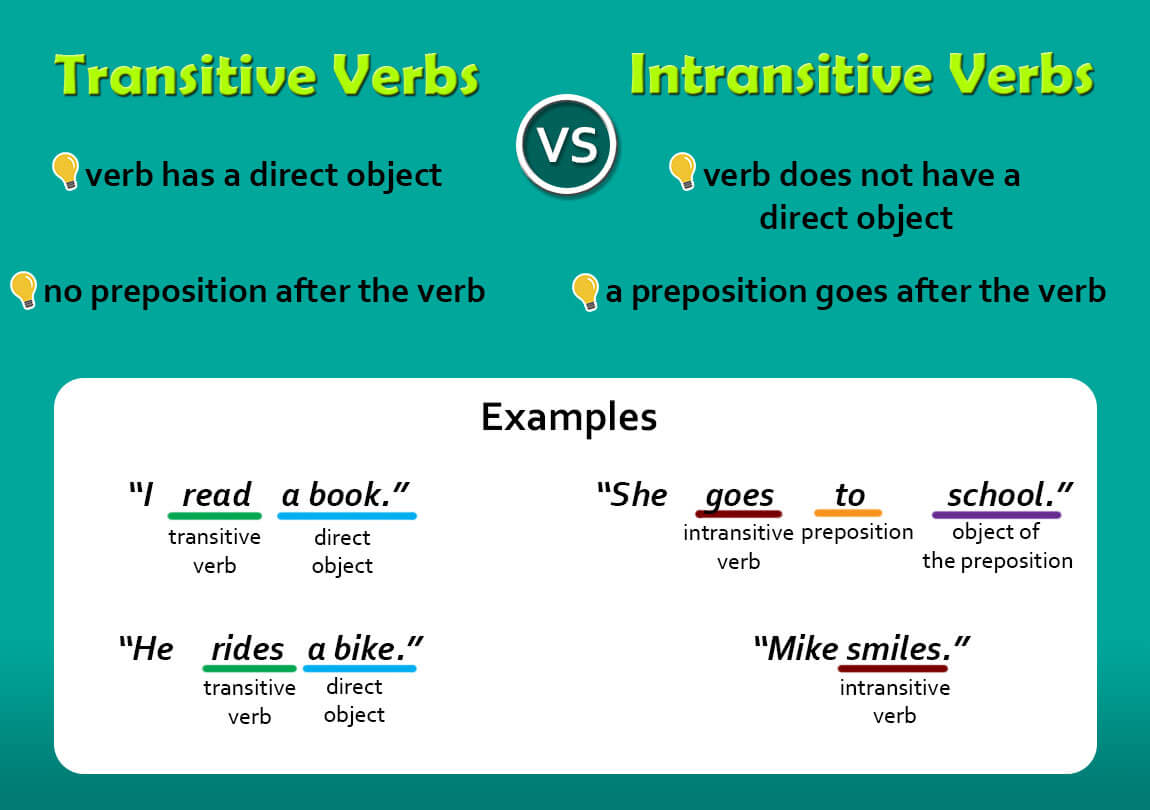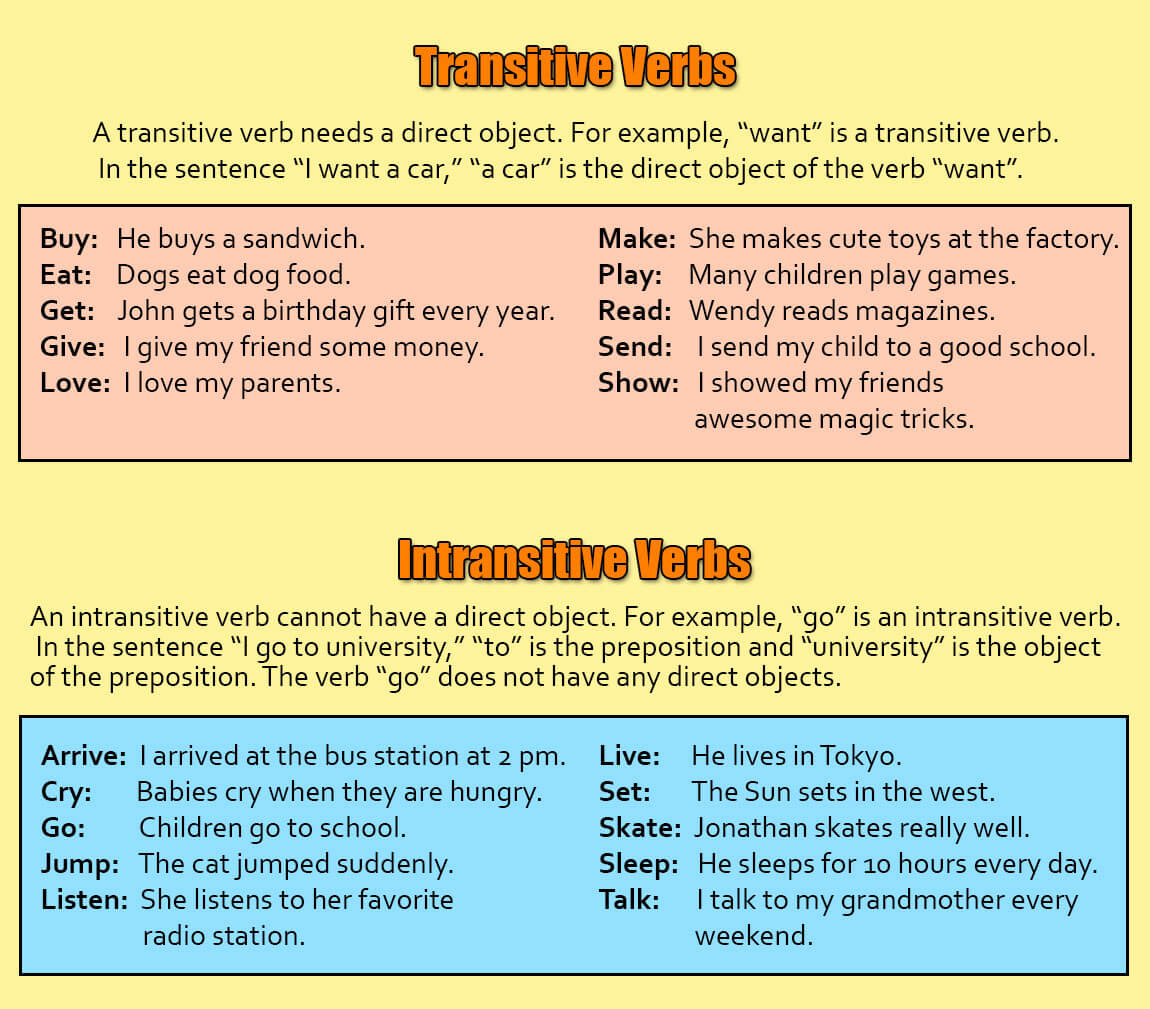Transitive Verbs VS Intransitive Verbs
- Transitive verbs need an object in the sentence. The object answers what or whom?
- Intransitive verbs do not need an object in the sentence. They describe an action, occurrence or state of being.
- Some verbs can be transitive or intransitive (e.g. "write"). Some verbs can only be transitive (e.g. "make"). Some verbs can only be intransitive (e.g. "go").
- If you need an object for an intransitive verb, put a preposition before the object. E.g. "She goes to school." ("to" is a preposition.)
Let's learn about transitive and intransitive verbs. These are two major verb types in English.
Transitive Verbs
Transitive verbs need to have an object in the sentence. It answers the questions: what or whom? The object receives the action of the verb.

Examples:
-
He rides a bike.
The verb ("rides") has an object ("a bike"). "Rides" is a transitive verb.
-
I read a book.
The verb ("read") has an object ("a book"). "Loves" is a transitive verb.
Intransitive Verbs
Intransitive verbs do not need an object to complete the sentence. These verbs often describe an action, occurrence, or state of being.
Examples:
-
Sammy runs.
The verb ("runs") has no object. "Runs" is an intransitive verb.
-
Mike smiles.
The verb ("smiles") has no object. "Smiles" is an intransitive verb.
Preposition after an intransitive verb
If you need to put in an object to an intransitive verb, put a preposition before the object.
Examples:
-
She goes school.
"goes" is an intransitive verb. You CANNOT have an object.
-
She goes to school.
"to" = preposition. "school" = object of the preposition.
-
Mike smiles Jenny.
"smiles" is an intransitive verb. You CANNOT have an object.
-
Mike smiles at Jenny.
"at" = preposition. "Jenny" = object of the preposition.
Some verbs can be either transitive or intransitive.
E.g. "write" can be a transitive verb or intransitive verb. "I write a letter." "James writes."
Some verbs need an object. They can only be transitive.
E.g. "make" is a transitive verb. "She makes cute toys."
Some verbs cannot have an object. They can only be intransitive.
E.g. "go" is an intransitive verb. "Children go to school."

Practice this topic with the AI English Tutor
AI English Tutor will teach you the grammar and practice it with you in a conversation format. Plus, 100+ practice questions on this topic to cement your understanding.
Try ALULA for free on your phone or tablet








Do you have any questions about this lesson? Ask in the comment section, below.